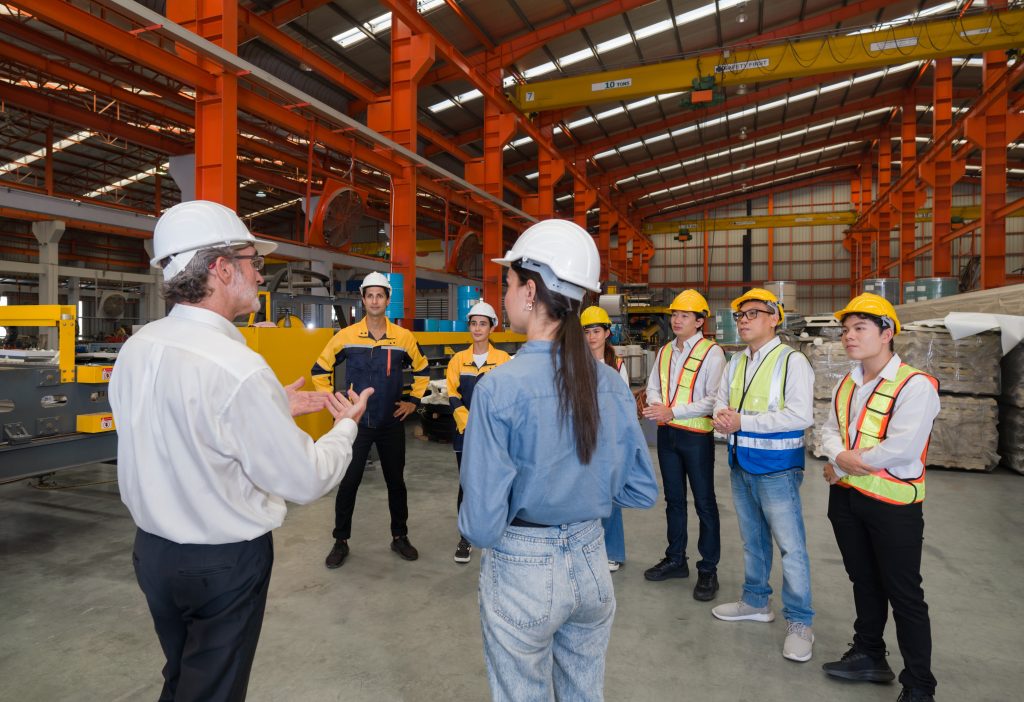Future-Proof Your Team: 5 Skills Every Manager Should Develop for the next generation

With the ‘great resignation’ taking force after the pandemic and the working world changing faster than the UK’s weather, managers need to be agile and adapt, steering their teams through this unpredictable future. We believe in the power of people and if your team is empowered and well-equipped this can be the secret sauce to keeping top talent and the growth of your business.
So, how can you future-proof your team?
Here are five skills every manager can develop to navigate the next few years. Let’s dive in.
1. Adaptability: Can you pivot without restraint?
Remember that time you bought a fancy new gadget, only to find it obsolete within a year? Yeah, the world seems like that now. Technology, markets and even job roles are evolving at breakneck speed. For your team to thrive, they need to be adaptable and agile.
Why it Matters:
- Tech and AI Evolution: New tools and AI platforms are constantly emerging. Being adaptable means your team can quickly learn and adopt new technologies.
- Market Shifts: Industries can change direction overnight. An adaptable team can pivot quickly, keeping you ahead of the curve.
- Job Fluidity: Roles and responsibilities are becoming less rigid. Flexibility ensures your team can handle whatever comes their way.
How to Cultivate It:
- Offer Learning: Promote a culture of continuous education. Online courses, workshops, and seminars are great ways to keep skills fresh.
- Encourage a Growth Mindset: Encourage your team to offer new ideas and platforms , teach them to see change and challenges as opportunities. Celebrate effort and improvement, not just success.
- Embrace Change: Lead by example. Show your team that change is not something to fear but something to embrace.
2. Emotional Intelligence: How is your EQ?
Most of us remember that boss that motivated you. Chances are, they may have had a high in emotional intelligence (EQ). EQ is about understanding and managing your own emotions, as well as those of others. It’s like having a superpower that helps you build stronger relationships and create a positive work environment.
Why It Matters:
- Better Team Dynamics: High EQ leads to better communication and collaboration. You can take a free test here.
- Conflict Resolution: Understanding emotions helps resolve conflicts more effectively.
- Employee Satisfaction: Teams with high EQ leaders are generally happier and more productive. Happier employees, particularly in sales roles, can produce up to 37% more profit (TeamBuilding, 2023).
How to Cultivate It:
- Self-Awareness Exercises: Encourage your team to reflect on their emotions and reactions.
- Empathy Training: Encourage a culture of empathy by encouraging your team to understand and share the feelings of others.
- Feedback Mechanisms: Create an environment where constructive feedback is welcomed and valued.
3. Digital Literacy: The art of AI
We’re living in a digital world, and to thrive, your team needs to be more than just familiar with the basics. Digital literacy is about understanding and effectively using technology and AI to solve problems, communicate and innovate.
Why It Matters:
- Efficiency: Tech and AI savvy teams can streamline processes and boost productivity.
- Innovation: Digital literacy encourages creativity and the ability to adopt new tools.
- Competitive Edge: Staying ahead in the tech game gives your business a significant advantage.
How to Cultivate It:
- Tech Training: Regular workshops on AI, software, platforms, and digital tools.
- Digital Projects: Assign projects that require the use of new technologies.
- Cross-Functional Teams: Mix tech-savvy employees with less experienced ones to promote peer learning.
4. Collaboration: The Power of Many
Today, success is all about collaboration. 33% of employees feel more loyal to companies that encourage a collaborative work environment (Bit.ai, 2022). Teams that can effectively work together, both within and outside the organisation, are the ones that will drive innovation and achieve great things.
Why It Matters:
- Diverse Perspectives: Collaboration brings together different viewpoints, leading to well thought out solutions.
- Increased Innovation: Teams that work well together can be more creative and innovative.
- Enhanced Productivity: Collaboration can help lead to more efficient problem-solving and decision-making.
How to Cultivate It:
- Team-Building Activities: Offer regular out of working environment activities that strengthen team bonds but don’t force people to attend – it’s their choice.
- Collaborative Tools: Use platforms like Slack, Trello, or Asana to facilitate teamwork.
- Open Communication: Encourage open and honest communication within your team.
5. Ownership Mindset: Empower leadership/
We’re big fans of empowering employees and giving them a voice. When your team takes ownership of their roles, they’re more engaged, motivated, and invested in the success of the company. An ownership mindset means thinking and acting like an owner, not just an employee.
Why It Matters:
- Increased Engagement: Employees who feel a sense of ownership are more committed and motivated (Stir.ac.uk)
- Better Decision-Making: Ownership can lead to more thoughtful and informed decisions.
- Company Loyalty: Employees who think like owners are more loyal to the company.
How to Cultivate It:
- Empower Your Team: Give your team the autonomy to make decisions and take initiative.
- Share the Vision: Make sure your team understands the company’s goals and their role in achieving them.
- Recognise and Reward: Acknowledge and reward ownership behaviours and achievements.
Wrapping Up
The future is unpredictable, but one thing’s for sure: the right skills can help your team approach whatever comes their way. By using these top 5 tips, you’re not just future-proofing your team; you’re setting them up for success.





